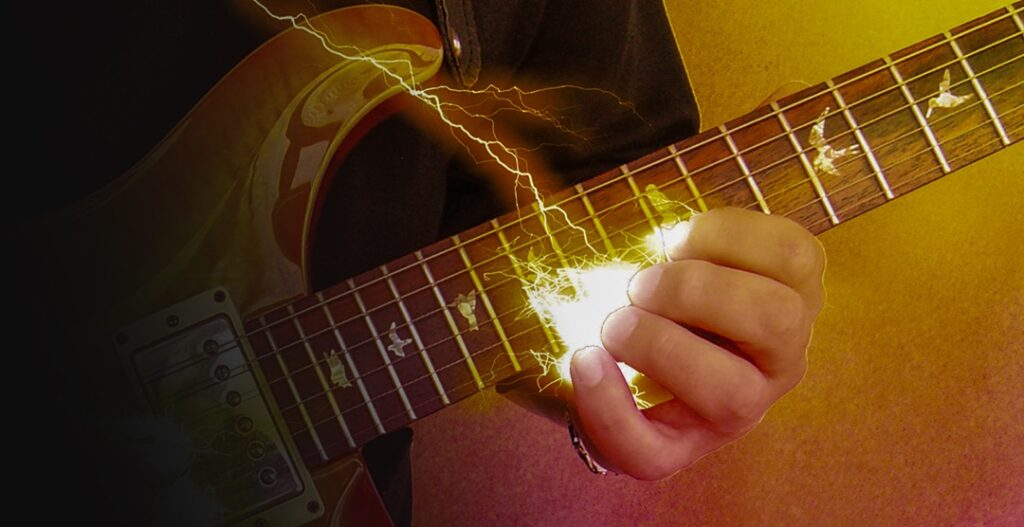Unlocking the limitless potential of the E Minor Pentatonic Scale on guitar with much more right here….
The E minor pentatonic scale is a cornerstone of guitar playing, revered by beginners and virtuosos alike for its versatility and expressiveness. Its five-note structure – E, G, A, B, D – forms the basis for countless iconic guitar solos across various genres, from blues to rock to metal. Despite its simplicity, the E minor pentatonic scale unlocks a world of musical potential, offering guitarists a vast array of melodic possibilities and creative freedom.
Understanding the Basics
Before delving into its endless possibilities, let’s first grasp the fundamental structure of the E minor pentatonic scale. In its basic form, it can be visualized as follows:
- E – G
- A – B
- D – E
This pattern repeats across the guitar fretboard, allowing players to navigate effortlessly between different positions and keys. Its simplicity is one of its greatest strengths, making it accessible to guitarists of all skill levels.
Building Blocks of Musical Expression
While the E minor pentatonic scale may seem straightforward, its true beauty lies in its ability to convey emotion and expression. Each note carries its own distinct character, enabling guitarists to infuse their playing with feeling and personality. Whether it’s the soulful bend of the G note or the haunting resonance of the E root, every interval offers a palette of tonal colors to explore.

Versatility Across Genres
One of the most remarkable aspects of the E minor pentatonic scale is its versatility across different musical genres. From the gritty blues licks of Stevie Ray Vaughan to the soaring solos of David Gilmour, its timeless appeal transcends boundaries and styles. Whether you’re shredding through a metal anthem or laying down a mellow jazz groove, the E minor pentatonic scale provides a solid foundation for musical experimentation and innovation.
Creative Applications
The beauty of the E minor pentatonic scale lies in its boundless creative potential. Here are just a few ways you can harness its power to elevate your guitar playing:
Improvisation: Use the scale as a springboard for improvisation, allowing your fingers to explore different patterns and phrasings. Experiment with rhythm, dynamics, and articulation to create unique melodies on the fly.
Soloing: Craft expressive guitar solos by weaving together notes from the E minor pentatonic scale. Focus on building tension and release, employing techniques such as slides, hammer-ons, and pull-offs to add depth and texture to your playing.
Riff Writing: Construct catchy guitar riffs by incorporating fragments of the E minor pentatonic scale into your compositions. Experiment with rhythmic patterns and melodic motifs to create memorable hooks that linger in the listener’s ear.
Chord Progressions: Explore the harmonic possibilities of the E minor pentatonic scale by incorporating it into your chord progressions. Experiment with modal interchange and substitutions to add complexity and color to your compositions.

Unlocking Your Creativity
The key to unlocking the endless possibilities of the E minor pentatonic scale lies in embracing experimentation and exploration. Don’t be afraid to stray from traditional patterns and conventions – instead, allow your intuition and musical instincts to guide you. Whether you’re jamming with friends or practicing alone in your room, treat the guitar as a canvas for self-expression and discovery.
Conclusion
In conclusion, the E minor pentatonic scale is far more than just a basic set of notes – it’s a gateway to a world of musical expression and creativity. By mastering its nuances and exploring its possibilities, you can elevate your guitar playing to new heights and unlock a lifetime of musical fulfillment. So pick up your guitar, embrace the endless possibilities of the E minor pentatonic scale, and let your creativity soar. So now you know the power of unlocking the limitless potential of the E Minor Pentatonic Scale on guitar!

